.png)
Why Custom Fiber Networks Are the Future of Business Connectivity
In today’s digital landscape, off-the-shelf internet solutions no longer cut it. Custom fibe...
David Wilson
Content Marketing
Managed Services
SLA Performance
Trending
on The Strand
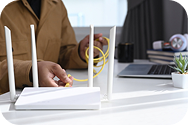
What Makes FirstDigital Different from National ISPs?
Enterprise Solutions
Digital Transformation

Inside the Network: How
FirstDigital Delivers Unmatched U...
Digital Growth
Innovation

The Real ROI of Switching to Custom Fiber
Custom Fiber
Network Engineering

How FirstDigital Supports Rapid Growth for Tech Hubs
Emerging tech hubs and data-driven companies need infrastructure that grows with them. FirstDigital’s flexible network architecture is designed to scale seamlessly—whether you...
Author Name
Author Title
Tech Hubs
Digital Growth
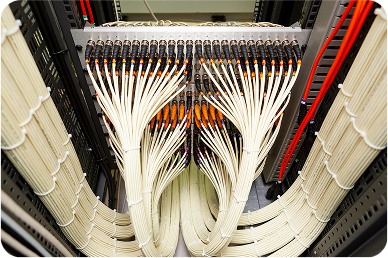
From Concept to Connection: Building a Fiber Network with FirstDigital
What does it take to go from a site plan to a live fiber connection? Take a closer look at First..
Author Name
Author Title
Custom Fiber
Fiber Optic Technology

Cybersecurity Starts with the Right Infrastructure
Security isn’t just about software—it begins with your network. Learn how FirstDigital’s private, custom-built fiber networks reduce cyber risks and create a secure foundation for...
Author Name
Author Title
Cybersecurity
Data Protection
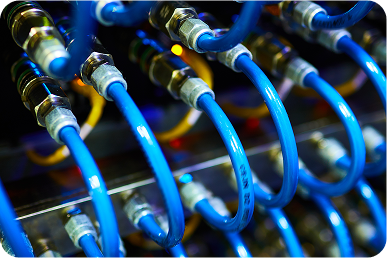
The Future of Remote Work Depends on Fiber Infrastructure
The remote revolution is here to stay. But not all internet solutions are up to the challenge...
Author Name
Author Title
Future of Work
Emerging Tech

5 Signs Your Business Has Outgrown Its Internet Provider
Lagging video calls, slow cloud apps, and service outages might not be “normal”—they...
Author Name
Author Title
Network Design
Enterprise Solutions

Why Custom Fiber Networks Are the Future of Business Connectivity
In today’s digital landscape, off-the-shelf internet solutions no longer cut it. Custom fiber...
Author Name
Author Title
IT Strategy
Business Internet
Unmatched Speed and Reliability
Custom fiber networks offer ultra-high-speed internet with low latency—perfect for bandwidth-heavy activities like video conferencing, cloud computing, and real-time data analysis. Unlike shared lines, custom fiber gives your business a dedicated connection, ensuring consistent performance during peak usage.
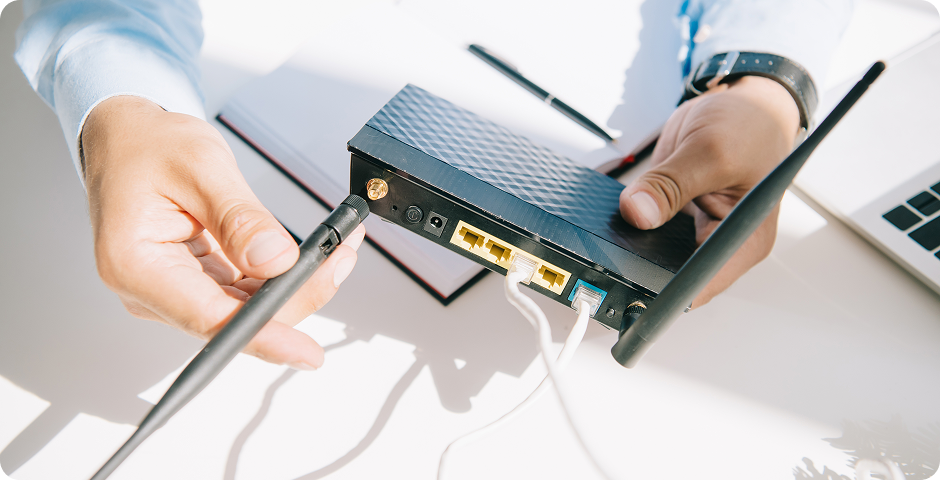
Built for Scalability
As your business grows, so does your need for bandwidth. Custom fiber infrastructure can be scaled with ease, enabling businesses to upgrade speeds or expand connectivity without overhauling their entire network. It’s future-proofing your operations in a way standard providers simply can’t match.
Enhanced Security
Cybersecurity is a growing concern, especially for organizations handling sensitive data. Custom fiber networks offer a more secure alternative to shared public networks by giving you full control over access points and traffic monitoring. Many custom builds also include private VLANs and encrypted data streams for added protection.
Tailored to Business Needs
Every organization has unique requirements. Whether it’s multiple office locations, remote teams, or 24/7 operations, custom fiber networks can be designed around your specific business processes. From symmetrical upload/download speeds to redundant routes for failover, customization ensures your infrastructure supports—not limits—your goals.
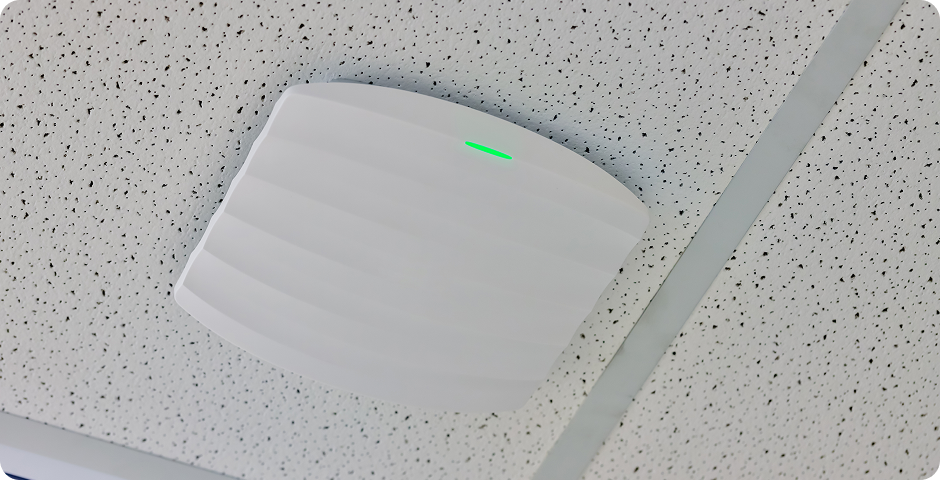
Long-Term Cost Efficiency
While the initial investment in custom fiber may be higher than traditional broadband, the long-term return is significant. Faster speeds, reduced downtime, fewer IT headaches, and scalable infrastructure mean lower operational costs and increased productivity over time.
.png)
Why Custom Fiber Networks Are the Future of Business Connectivity
In today’s digital landscape, off-the-shelf internet solutions no longer cut it. Custom fibe...
David Wilson
Content Marketing
Managed Services
SLA Performance
1. Frequent Slowdowns During Peak Hours
Are your team members complaining about sluggish internet speeds during the day? If productivity grinds to a halt every afternoon, it’s likely your bandwidth isn’t keeping up with demand. Many basic internet packages can’t handle the data load of modern businesses, especially when video calls, cloud apps, and file transfers are in constant use.
2. Increased Downtime or Service Interruptions
Reliable connectivity is essential for day-to-day operations. If your internet is going down more often than usual or your provider takes too long to respond to outages, it’s a major red flag. Downtime doesn’t just frustrate employees—it costs you money, customers, and credibility.

3. Scalability Limitations
As you add more devices, employees, or branch offices, your internet infrastructure needs to scale with you. If your provider lacks the ability to offer higher speeds, dedicated lines, or business-grade services like static IPs or private networks, it’s time to find one that can grow with your ambitions.
4. Poor Customer Support
When issues arise, fast and knowledgeable support is non-negotiable. If you're stuck waiting on hold, dealing with unhelpful agents, or navigating complicated ticketing systems just to get help, that’s a sign your provider isn’t prioritizing your business needs.
5. Outdated Technology or Offerings
Your internet provider should be offering modern solutions like fiber-optic connections, advanced security tools, and business continuity features. If your provider is still relying on legacy infrastructure or doesn’t support the latest technologies, they’re holding your business back.

Time to Upgrade?
Switching to a more capable internet provider isn’t just about faster speeds—it’s about future-proofing your business. Look for a provider that offers reliable uptime, scalable plans, strong customer service, and the ability to support your growing operational demands.
If you’re seeing any of these signs, it might be time to evaluate your current internet setup and explore better options that align with your business goals
.png)
5 Signs Your Business Has Outgrown Its Internet Provider
Lagging video calls, slow cloud apps, and service outages might not be “normal”—they...
Emily Davis
SEO Expert and Blogger
SLA Performance
Business Internet
In 2025, the internet is our connection to everything from scheduling appointments to mobile banking to food delivery. But what exactly is WiFi and how does it keep us connected across timezones and oceans? In this article, we’ll explore the history of wireless internet connectivity, how the technology functions, and how you can optimize your wireless network for optimal speed and security.
What Is WiFi?
The term “Wi-Fi” refers to the wireless technology we use to connect our phones, computers, tablets, and other devices to the internet. Your router sends a radio signal to your device, which then translates the signal into information you can see and hear. This process also works in reverse – your phone or computer sends a radio signal to the router, which then translates that signal into data. Many people erroneously believe that the term Wi-Fi is short for "wireless fidelity." However, “Wi-Fi” is actually a trademarked phrase that refers to IEEE 802.11x Local Area Network (LAN) standards, which enables devices to communicate over radio waves. The IEEE (Institute of Electrical and Electronics Engineers) sets standards for many technological protocols, and it uses a numbering system to classify these standards.
How Does WiFi Work?
The technology used in WiFi communication is very similar to the radios used for walkie-talkies, cell phones and other devices. Essentially, your WiFi router uses radio waves to send and receive information from other devices. They change digital data (the 1s and 0s) into radio signals and then turn those signals back into data. Remember to be cautious about connecting to unsecured Wi-Fi networks in public locations, such as cafes and airports. Public, unsecured networks pose a significant risk to device and personal data security due to the use of open communication channels. FirstDigital always recommends opting for password-protected wireless networks or personal hotspots whenever possible.
What are Wireless Access Points?
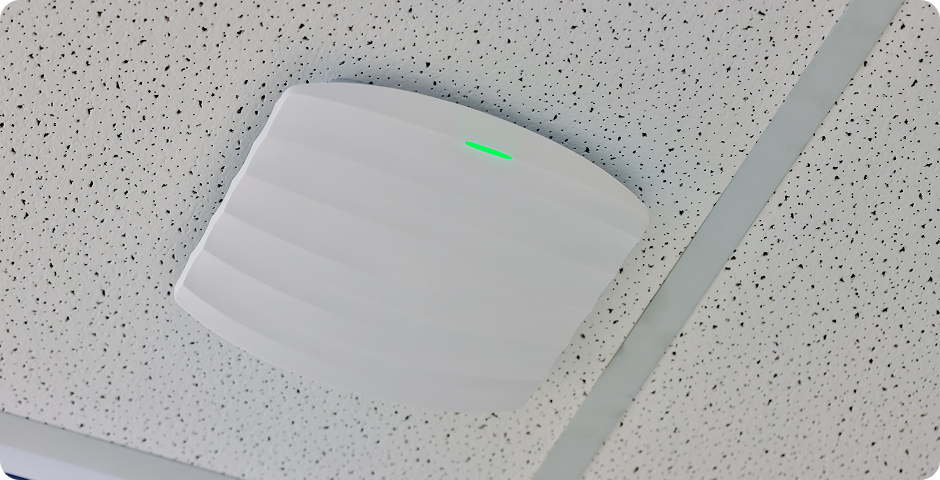
WiFi routers are also sometimes referred to as “wireless access points (WAP).” These access points act as a hub so other devices, like your phone or laptop, can connect to a local area network and access the internet. The router is plugged into an ethernet cable which is connected to the network, making wireless connection possible.Most Wi-Fi routers can be easily managed through mobile apps or web-based interfaces, making it easy to customize your network settings.
Common WiFi Terms
There are many acronyms and abbreviations to keep in mind when discussing Wi-Fi technology. Here are a few of the most common
- SSID - SSID stands for “Service Set Identifier.” The SSID is the name of your Wi-Fi network. Wi-Fi routers and access points broadcast their SSIDs so devices can identify and automatically connect to Wi-Fi. When you're looking for Wi-Fi networks on your computer or mobile device, the SSIDs are the names that will appear in the list of available networks.
- Bandwidth - Bandwidth is your Wi-Fi network’s carrying capacity. It refers to the maximum amount of data that can be transferred through an access point in a specific amount of time.
- Latency - Latency, also referred to as “ping,” measures the time it takes for data to travel from your device to a server and back. Lower latency means you get faster, more responsive internet connection, while higher latency can cause laggy connections, buffering, and slow loading times.
- Signal Strength - This term refers to the strength of the signal received by your device from the access point. A stronger signal usually means a faster, more reliable connection. Signal strength is measured in negative dBm (decibel milliwatts). For example, a signal strength of -50 dBm or better is considered excellent, while -70 dBm or worse indicates a weaker signal.
- Encryption - Encryption is the process of scrambling data that is sent over a wireless network to prevent unauthorized access. This makes your data unreadable to anyone without the decryption key, which keeps your personal information – and your customers’ information – safe and secure.
How to Optimize Your WiFi Performance
To get the best Wi-Fi reach and ensure you get consistent speeds and performance, we recommend placing access points (APs) in central spots like hallways or main living areas. This way, the signal is strong enough to go through walls and into nearby classrooms, dorm rooms, and offices. Mounting your router reduces the need for extra directional antennas, which keeps your home or office network simpler and more affordable to set up. It’s also a good idea to be aware of your internet provider’s advertised speeds before you begin troubleshooting any issues. Log into your Wi-Fi provider’s app or website to check how fast your network should be running, and then use FirstDigital’s speed test to check your current connection.If you’re still having speed issues, consider switching Wi-Fi bands. Most routes have at least two radios: 2.4 GHz and 5 GHz. Some newer systems may also have a third radio accessing even faster speeds. Most modern routers and mesh setups automatically manage your connections with a single Wi-Fi name, which is called band steering. If your internet is slow, it's likely your device is connected to the 2.4 GHz band.

Explore Fiber Internet for Faster, More Reliable Connections
If you're looking for a faster, more reliable wireless connection, the quality of your internet service matters just as much as your WiFi setup. That’s where fiber internet comes in. Fiber offers unmatched speed, low latency, and the ability to handle multiple connected devices with ease. If seamless streaming, smooth video calls, and lightning-fast downloads are your priority, it may be time to upgrade. Learn more about FirstDigital’s fiber internet options and see how you can take your WiFi performance to the next level.
.png)
The Future of Remote Work Depends on Fiber Infrastructure
The remote revolution is here to stay. But not all internet solutions are up to the challenge...
Jane Smith
Freelance Writer and Editor
Private Networks
Business Internet
The Foundation of Security
Strong cybersecurity begins with a secure, resilient infrastructure. Networks that are built with outdated hardware or pieced together over time are inherently more vulnerable. FirstDigital ensures that every layer of the network—from fiber lines to core routers—is designed with security in mind.

Built-In Protection at Every Layer
Modern infrastructure must support encryption, segmentation, traffic monitoring, and intrusion detection. FirstDigital incorporates these capabilities directly into its network solutions, creating a secure baseline that helps prevent breaches before they occur.
Proactive Network Monitoring
An often-overlooked advantage of high-quality infrastructure is visibility. FirstDigital provides continuous monitoring tools and analytics that help identify unusual behavior in real time. Early detection is critical in stopping threats before they spread.
Support for Zero Trust Architectures
Adopting a zero trust approach requires a network that can handle complex identity verification and segmentation at scale. FirstDigital’s infrastructure supports this model by providing fast, secure access only to verified users and devices, minimizing the risk of lateral movement by attackers.

Scalability Without Compromise
As businesses grow, so do their security needs. FirstDigital’s solutions are built to scale while maintaining security posture. Whether it's expanding a data center or adding remote offices, their infrastructure adapts without sacrificing protection.
Conclusion
Cybersecurity isn’t just about firewalls and passwords—it starts with the right infrastructure. With FirstDigital, businesses get a trusted partner that provides not only speed and reliability, but also the secure foundation needed to thrive in a digital world.
.png)
Cybersecurity Starts with the Right Infrastructure
Security isn’t just about software—it begins with your network. Learn how FirstDigital’s private, custom-built fiber networks reduce cyber risks and create a secure foundation for...
Jane Smith
Freelance Writer and Editor
Private Networks
SLA Performance
Step 1: Understanding the Need
Every project begins with a thorough needs assessment. FirstDigital works closely with municipalities, businesses, and tech leaders to understand current infrastructure, future demand, and geographic considerations. This ensures the network is designed with both today and tomorrow in mind.

Step 2: Strategic Planning & Design
Using advanced mapping and modeling tools, FirstDigital designs a customized fiber architecture that balances coverage, performance, and cost-efficiency. Their planning team considers everything from right-of-way logistics to potential expansion zones, ensuring the network can grow with the community.
Step 3: Building the Infrastructure
Construction is carried out with precision and minimal disruption. FirstDigital’s engineering and installation teams coordinate closely with local authorities and stakeholders to ensure safety and efficiency. Whether it's trenching, boring, or aerial fiber placement, each step is optimized for long-term reliability.
Step 4: Lighting the Network
Once the physical infrastructure is in place, FirstDigital brings the network to life. Cutting-edge hardware and software are installed to manage bandwidth, route traffic, and ensure maximum uptime. The result is a high-speed, low-latency network that’s ready for modern digital demands.

Step 5: Supporting the Connection
The process doesn’t stop at installation. FirstDigital provides continuous support, proactive monitoring, and scalable service options to adapt to changing needs. This ensures clients always have access to the fastest and most reliable connection possible.
Empowering the Future
From concept to connection, FirstDigital is more than a service provider—they’re a partner in digital transformation. Their fiber networks are not just infrastructure; they’re the foundation for smart cities, innovative startups, and thriving digital economies.
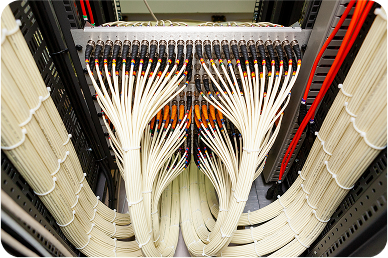
From Concept to Connection: Building a Fiber Network with FirstDigital
What does it take to go from a site plan to a live fiber connection? Take a closer look at Fir...
John Doe
Senior Content Strategist
SLA Performance
Cybersecurity
How FirstDigital Supports Rapid Growth for Tech Hubs
In an increasingly digital world, the pace at which technology hubs grow is staggering. From startups scaling at lightning speed to established enterprises expanding their digital capabilities, the need for robust infrastructure is greater than ever. This is where FirstDigital comes in—playing a vital role in enabling seamless growth for tech-driven communities.

vCutting-Edge Connectivity
FirstDigital offers high-speed fiber internet solutions that provide the bandwidth needed for data-intensive operations. Whether it’s cloud computing, AI development, or real-time collaboration, tech hubs rely on uninterrupted, low-latency connectivity to stay competitive. FirstDigital’s network is designed to scale with demand, ensuring future-proof service.
Reliable Infrastructure for Innovation
Tech hubs thrive on innovation, and reliability is non-negotiable. FirstDigital invests heavily in its infrastructure, delivering high uptime, robust redundancy, and exceptional customer support. This reliability allows tech companies to focus on what they do best—building the future.
Customized Enterprise Solutions
Understanding that no two tech hubs are alike, FirstDigital works closely with businesses to craft customized solutions. Whether it's dedicated internet access, voice services, or managed IT, their solutions are tailored to support diverse technological environments.
Supporting Economic Growth
By empowering tech ecosystems, FirstDigital contributes directly to regional economic growth. Their services attract tech talent, encourage investment, and foster innovation ecosystems that benefit entire communities.

Final Thoughts
As tech hubs continue to flourish, they need partners who understand the demands of rapid scaling. FirstDigital stands out as a crucial enabler of growth, delivering the speed, security, and support that modern tech companies depend on.

How FirstDigital Supports Rapid Growth for Tech Hubs
Emerging tech hubs and data-driven companies need infrastructure that grows with them. FirstDigital’s flexible network architecture is designed to scale seamlessly—whether you’...
Michael Johnson
Digital Marketing Specialist
Cybersecurity
Business Internet
No Results Found
Please try a different keyword








